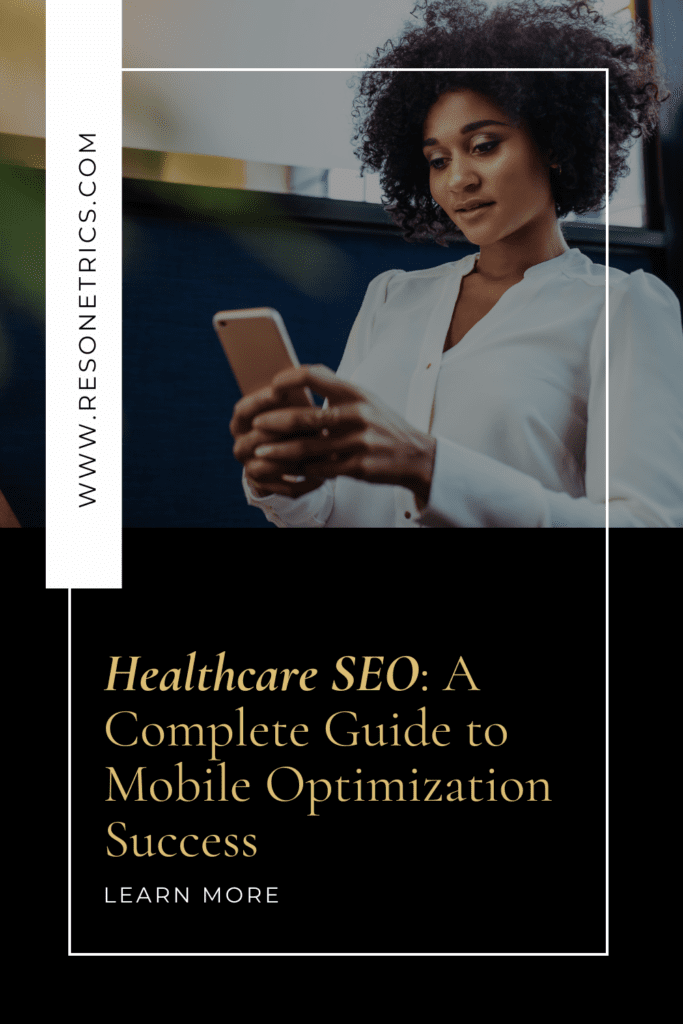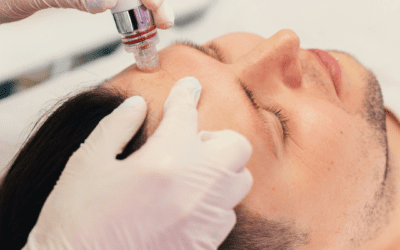
The way patients find and interact with healthcare providers has undergone a fundamental shift. More and more patients are using mobile devices to discover, research, and connect with luxury health and wellness providers.
As mobile search increases, it becomes even more crucial to understand how to optimize your wellness practice’s website to provide an exceptional user experience, maintain strong search rankings, and attract new patients.
Website Design for Healthcare: Mobile Optimization Essentials
Mobile optimization begins with a foundation of design elements that ensure your website performs flawlessly across all devices. Your healthcare website must adapt seamlessly to different screen sizes while maintaining functionality, speed, and a professional, high-end appearance. This adaptability directly impacts your search engine rankings and patient engagement, so it’s essential for upscale wellness providers to understand how to integrate these elements into their websites. Here are 2 key elements of an optimized website:

1. Page Design
A mobile-optimized healthcare website requires careful attention to several key design elements. Your website should automatically adjust its layout based on the device being used, ensuring that all content remains easily accessible and readable. This includes proper spacing of links and buttons to prevent accidental clicks, and text that’s large enough to read without zooming.
2. Page Speed
Page speed significantly influences both search rankings and user experience. Google reports that most users will leave a site that takes longer than 3 seconds to load, making quick loading times crucial. Implementing proper image optimization, minimizing code, and leveraging browser caching can dramatically improve your site’s speed and mobile performance. Check your site’s performance with Google PageSpeed Insights for a detailed report on your site speed.
Creating a Mobile-First Content Strategy
Content organization plays a vital role in mobile optimization. Your healthcare content should be structured with mobile users in mind, which requires you to organize information in a way that puts the most important details first. Mobile users should be able to find critical information like contact details, services, and appointment scheduling without extensive scrolling or clicking.
Concise Content Presentation
Mobile users tend to scan content quickly. Present information in easily digestible formats using:
- Short paragraphs
- Clear headings
- Bulleted lists
- Strategic use of white space
Technical Aspects of Mobile Optimization
Your website acts as a virtual storefront for your health and wellness practice. Welcome each visitor and create an optimal user experience by focusing on:
Responsive Design Implementation
Your healthcare website should automatically detect and adjust to different screen sizes. This includes:
- Flexible images that scale appropriately
- Properly functioning navigation menus
- Forms that remain easy to complete on mobile devices
- Tables that adapt to smaller screens
Mobile-Specific Features
Implement mobile-specific functionalities that enhance user experience such as:
- Click-to-call buttons
- Easy-to-use appointment scheduling
- Mobile-friendly contact forms
- Simplified navigation menus
Measuring Mobile Performance
Regular monitoring of your mobile website’s performance is essential for continued SEO success. Track key metrics including:
User Behavior Analysis
These metrics monitor how mobile users interact with your site and pinpoint areas where you can improve your overall user experience. KPIs include:
- Page visit duration
- Bounce rates
- Navigation patterns
- Conversion rates
Technical Performance Metrics
Track technical aspects of mobile performance to ensure an exceptional user experience on any device. These metrics include:
- Page load times
- Mobile usability issues
- Core Web Vitals
- Mobile-specific errors
Implementing Mobile SEO Best Practices
There are several steps you can take to immediately enhance your SEO success. Addressing these key elements improves mobile user experience, and boosts visibility for your luxury healthcare practice. Integrate these best practices into your healthcare SEO strategy:
Content Optimization
Ensure your content works effectively on mobile devices:
- Use readable fonts and appropriate sizes
- Implement proper heading structure
- Optimize images for mobile viewing
- Create mobile-friendly video content
Local Search Optimization
Mobile optimization is particularly crucial for local search success:
- Implement proper schema markup
- Optimize for “near me” searches
- Ensure consistent NAP information
- Maintain accurate Google Business Profile information
Moving Forward with Mobile Optimization
To maintain strong mobile performance, you must assess your website regularly. Schedule regular reviews, maintenance, and upgrades that include:
Mobile Optimization Audits:
- Test across different devices
- Check for broken functionality
- Monitor page speed
- Review user feedback
Continuous Improvement Measures:
- Stay current with mobile optimization best practices
- Update design elements as needed
- Implement new mobile features
- Respond to algorithm updates
- Address user feedback
Mobile optimization is not a one-time task but an ongoing process. By focusing on an exceptional mobile user experience and following these optimization guidelines, your healthcare practice can achieve better search visibility, attract more leads, and create growth opportunities for your luxury health and wellness practice.










